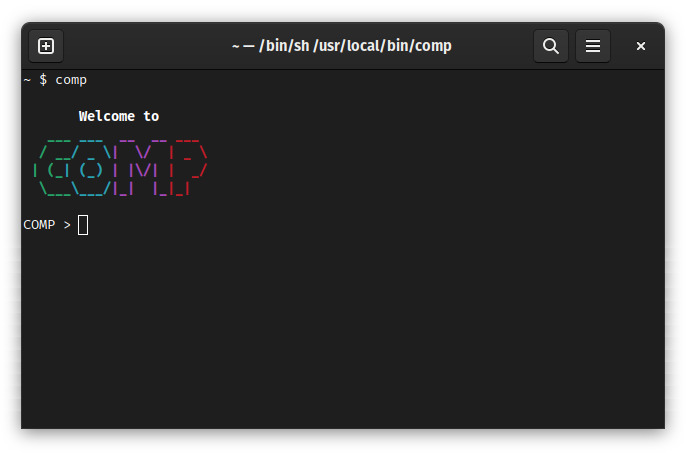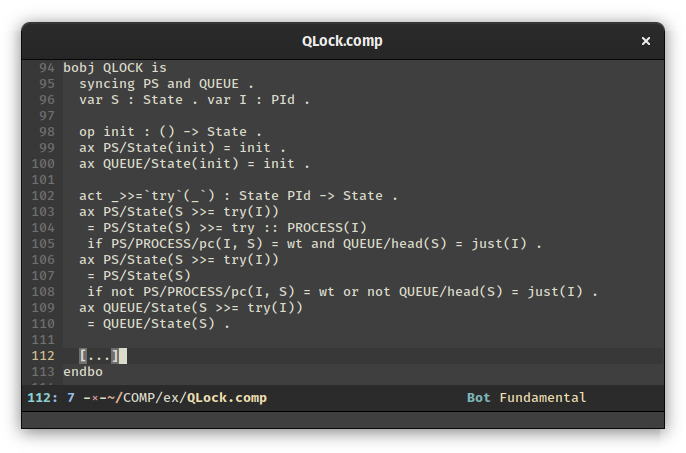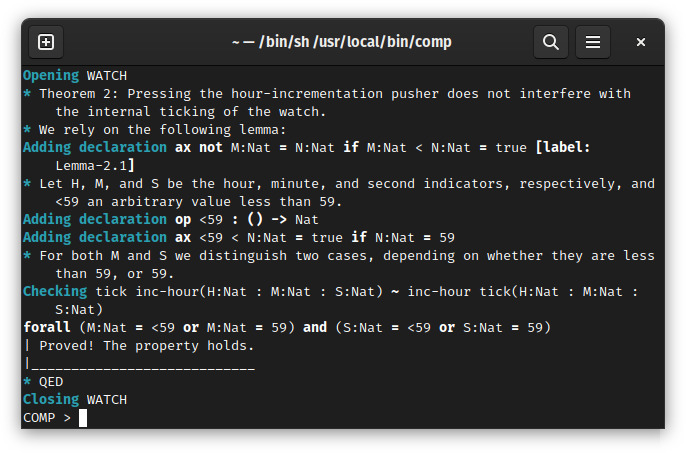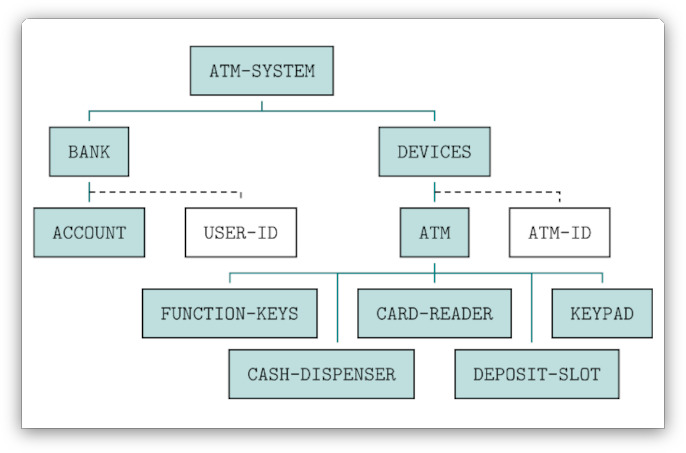THE COMP SYSTEM
COMP is a structured specification language and analysis tool that supports the formal development of component-based systems. It is based on the behavioural-abstraction paradigm, which gives prominence to the observable behaviour of systems over their structural representations or the functions that they may perform.
The language is rigorously based upon hidden algebra. Its main programming units, called object modules, consist of hidden-algebra declarations of data or state sorts, data operations, actions, observations, and axioms that bring everything together and define the semantics of programs. Structured specifications are obtained through parallel, synchronized, and indexed compositions of object modules – a defining feature of COMP – which allow the construction of larger and more complex objects, in a hierarchical fashion, from simpler components.



